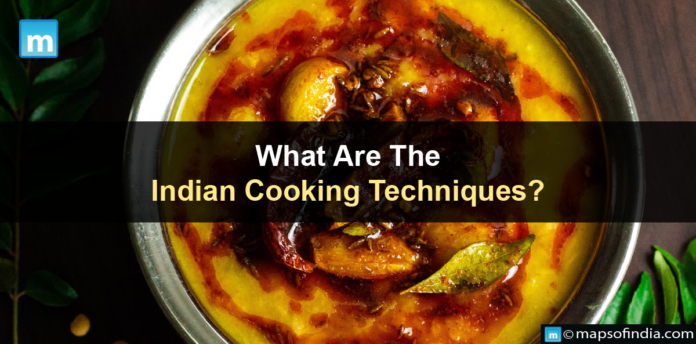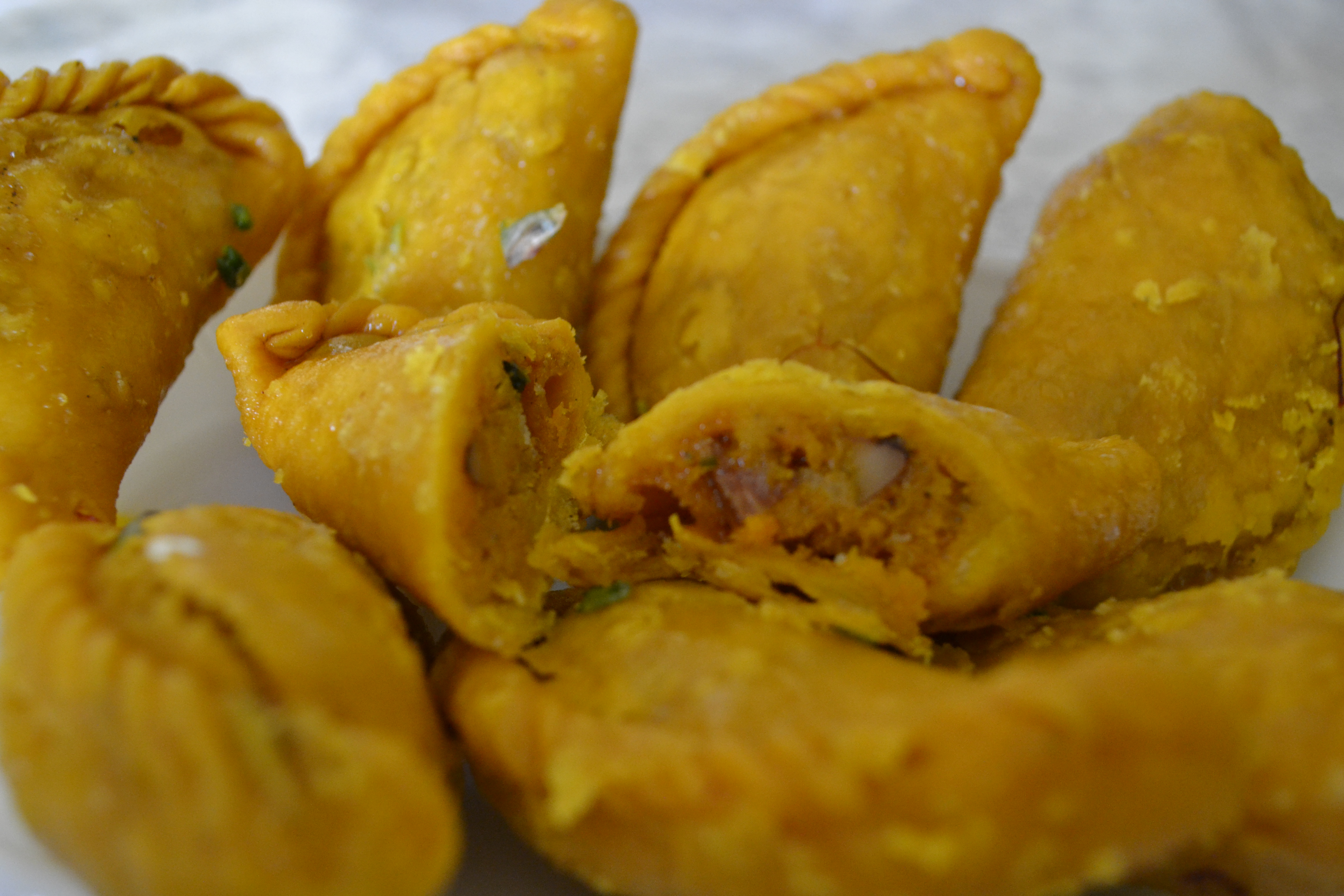The same technique is used for cooking everywhere in the world: using heat to transform raw ingredients into something palatable, and Indian cuisine is no exception to this rule. You should get to know a few strategies when you start experimenting with this exciting and gratifying dish.
The Most Common Indian Cooking Techniques are:
-
Tempering (Tadka)
The technique is frequently employed in North Indian cooking to improve the flavor of dal, curries, and vegetables. For the oil/ghee and ingredients to combine beautifully when the spices are added, it is primarily necessary to embed the flavor and fragrance of the spices in the oil. The time of this approach depends on the kind of dish and is used to improve the flavor of vegetables, daals, chutneys, raita, and other foods.
Popular Dishes – Bhuna Masala, Daal Fry, Rogan Josh, and Sambar.
-
Sautéing (Bhuna)
“Bhuna” refers to combining fresh aromatics, spices, and either meat or vegetables to make the foundation of a meal. While not the complete cooking procedure for food, this approach contains three steps: sautéing, stir-frying, and stewing. As the mixture browns, whisk continuously and add liquid to deglaze numerous times. By browning and thickening the components while preventing them from burning, the flavor is meant to be intensified.
Popular Dishes – Bhindi Masala, Alu Gobhi, Lamb curry.
-
Braising/Steaming (Dum)
In Indian cooking, a technique called “dum” means “breath in.” This involves slowly using a circular, heavy-bottomed pot with a lid to steam food over a low flame. By doing this, the food cooks in its own steam, and the herbs and spices can fully infuse their flavors into the dish. Traditionally, a clay pot (or handi) was used and wrapped with dough made of wheat flour to keep the steam inside. This helped to enhance the fragrance and develop the taste of the food.
Popular Dishes – Biriyani, Idli, Dhokla, Bengali Bhapa Ilish, and Patra.
-
Smoking (Dhuanaar)
In the dhungar/dhuanaar method, live coal infuses dishes with smokey characteristics. Usually, a container with live coal added to it is kept with the food. To keep the smoke within and give the dish a smokey taste, a tiny bit of ghee is drizzled over the coal before the entire thing is covered with a lid.
Popular Dishes – Paneer Angara, Dal Tadka, Sultani Dal, and Dum Ka Murgh.
-
Pickling (Balchao)
In India’s coastal regions, pickling is widespread, where vegetables or seafood are preserved in vinegar and spices for several days. This is a Goan technique that was long ago influenced by the Portuguese. To let the spices penetrate deeper and grow richer/stronger, shellfish like prawns or vegetables like eggplant must be picked in sugar, vinegar, and other spices many days before they are consumed.
-
Deep Frying (Talna)
It was a long-ago practice to fry food to extend its shelf life for long-distance travel. The meal is cooked in small batches in only 1-2 inches of oil in the Indian style of deep-frying, which uses fresh or ghee each time (not saved). This technique involves drenching food items in hot oil to create crispy foods like fries.
Popular Dishes – Samosas, Bhajias and Papads.
-
Roasting (Tandoori)
The Indian equivalent of a clay oven or grill, the tandoor, is the most conventional and well-liked grilling technique. Modern households use an oven or BBQ grill to cook meals and imitate the tandoori method. A tandoori masala marries the meats and veggies before they are skewered and cooked in the clay pot.
Popular Dishes: Tandoori Chicken, Malai Kebabs, all types of Tikkas, and some Indian breads like Naan and Roti.





